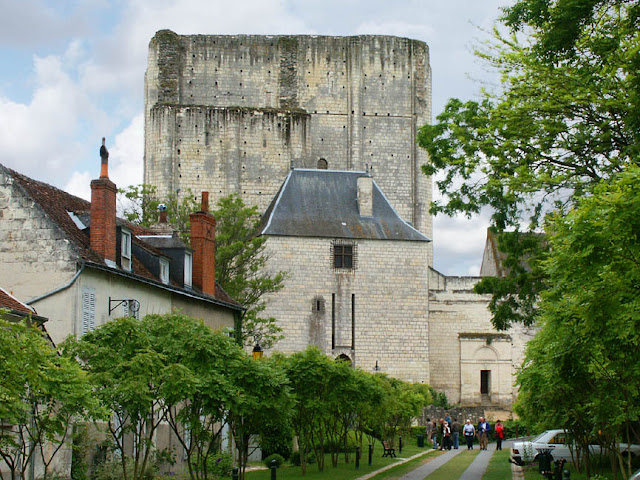It's not just us confined to our homes in the Touraine Loire Valley. Over the centuries there have been plenty of people kept in varying states of restriction here.
Marie de Medici was sent into exile at the Royal Chateau of Blois by her son. She was born in Italy in 1575 and was King Henry IV's queen from 1600 to 1610. On the king's death she became regent until 1614 for Louis XIII.
Royal Chateau of Blois.
When Louis took full control in the spring of 1617 he decided to exile his mother and her entourage to Blois. Eventually, on the night of 21-22 February 1619, the 43 year old Marie escaped. She climbed out of a window of her apartment and with her jewel casket under her arm descended a 40 metre rope ladder.
The queen mother sought refuge at Angouleme and it took until 1622 until she was reconciled with her son.
Eleanor of Aquitaine was imprisoned by her husband Henry II Plantagenet at the chateau-fortress of Chinon. Going back to the 12th century, 1173 to be precise, Eleanor had been queen of England for 20 years, when she organised a conspiracy to elevate her three sons, Richard, Geoffrey and Henry the Younger, against their father the king.
This revolt was supported by Eleanor's first husband Louis VII of France, and the king of Scotland. Eleanor hoped to seize power from Henry II, but she was captured whilst travelling to try to join the court of Louis VII.
Chateau-fortress of Chinon.
She was imprisoned for nearly 15 years, first of all at the chateau-fortress of Chinon, then at Salisbury and other English castles, until her liberation on the death of Henry on 6 July 1189.
Also held at the chateau-fortress of Chinon were the leaders of the Knights Templar.
Ludovico is an iconic figure of the Italian Renaissance, and a key player in the Italian Wars. He was accused of inciting Charles VIII to take the kingdom of Naples and even encouraged the invasion of his own duchy.
The Donjon (castle keep) on the Royal Citadel in Loches.
At the death of Charles VIII, his successor Louis XII continued the Italian Wars and pressed his claim to be the legitimate heir to the Duchy of Milan through his grandmother Valentina Visconti. Ludovico Sforza was taken prisoner by the French in April 1500 and sent to France. He died in the keep of the Royal Citadel of Loches in 1508 after four years of imprisonment there.
And the Royal Chateau of Amboise kept the leader of the 19th century Algerian uprising, the Emir Abd el-Kadir, under house arrest until he was finally allowed to go into exile in Lebanon.
************************************************
For details of our private guided tours of chateaux, gardens, wineries, markets and more please visit the Loire Valley Time Travel website. We would be delighted to design a tour for you.
We are also on Instagram, so check us out to see a regularly updated selection of our very best photos.
We are also on Instagram, so check us out to see a regularly updated selection of our very best photos.




4 comments:
And the Abbaye de Fontevraud a prison from the early 1800's to 1963. You could do a post on it, lots of very interesting stuff in there.
Very true. I forgot about Fontevraud's period as a prison -- very grim. I did deliberately avoid general prisons and hoi polloi to focus on the high profile prisoners who were mostly under conditions of house arrest. I've probably written something about Fontevraud as a prison before, but maybe just in passing.
Very interesting and well researched post. As far as Fontevraud is concerned, the writer and poet Jean Genêt, even though he never was a prisoner there but at Mettray near Tours, described the life in this prison in his novel Le Miracle de la Rose.
Thanks chm. When one visits Fontevraud the thing that really brings home what a truly horrible prison it was is the traces in the church of how it was divided up vertically to make the dormitory. I don't know why that should be, since it's just tarry marks on the stone, but somehow very evocative.
Post a Comment